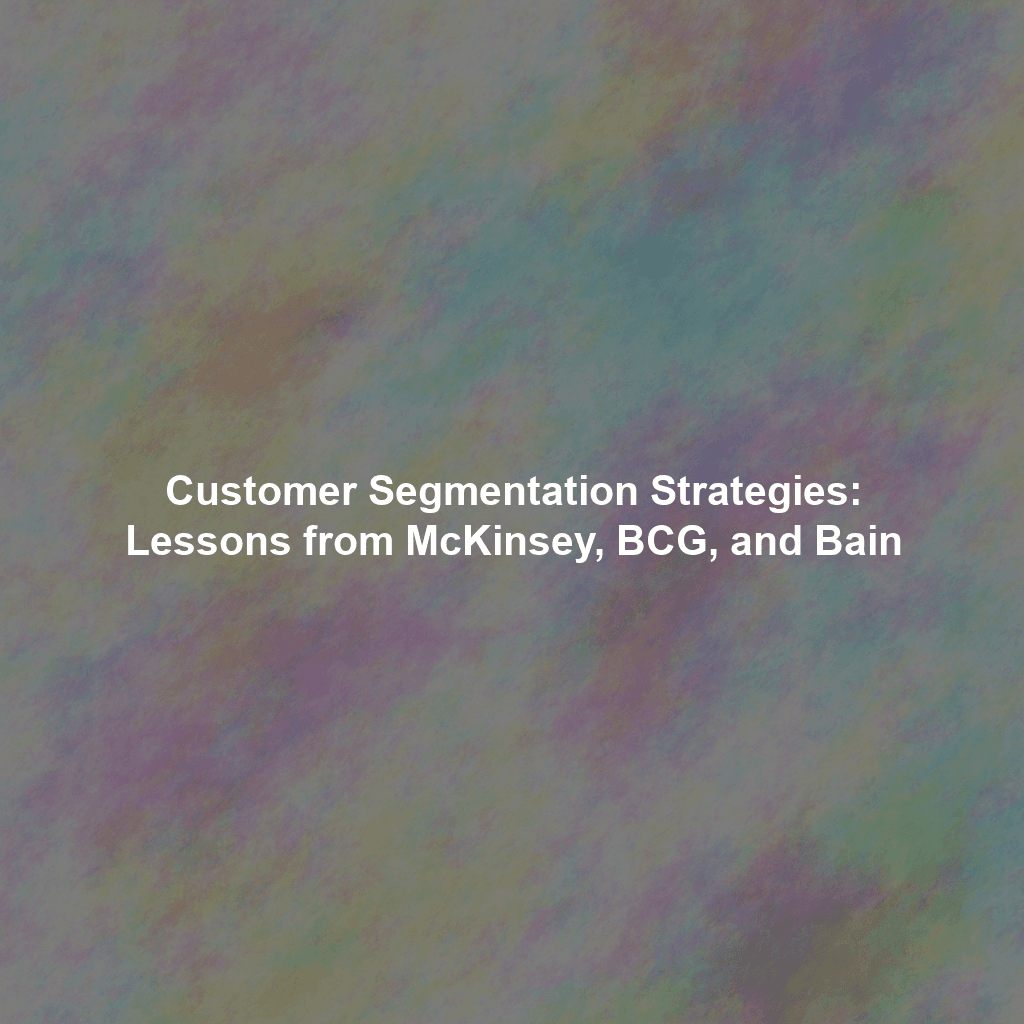The Importance of Customer Segmentation
Customer segmentation is the process of dividing a broad consumer or business market into sub-groups of consumers based on shared characteristics. These characteristics might include demographics, psychographics, behaviors, needs, or geographic location. The goal is to tailor marketing efforts and product offerings to better meet the needs of each segment, thereby increasing customer satisfaction, loyalty, and ultimately, profitability.
Why is this so important? Well-defined customer segments allow companies to:
- Personalize Marketing Messages: Create targeted campaigns that resonate with specific customer groups.
- Optimize Product Development: Identify unmet needs and develop products that cater to specific segments.
- Improve Customer Experience: Deliver tailored experiences that enhance satisfaction and build loyalty.
- Increase Marketing ROI: Focus resources on the most promising segments, maximizing the return on investment.
- Gain a Competitive Advantage: Develop deeper customer insights than competitors, allowing for more effective strategies.
Customer Segmentation Approaches: McKinsey, BCG, and Bain
While all three McKinsey, BCG, and Bain recognize the importance of customer segmentation, their approaches can differ in emphasis and methodology.
McKinsey & Company: Value-Based Segmentation
McKinsey often emphasizes value-based segmentation, which focuses on understanding the economic value that different customer segments bring to the business. This involves analyzing factors such as:
- Customer Lifetime Value (CLTV): Predicting the total revenue a customer will generate throughout their relationship with the company.
- Cost to Serve: Understanding the resources required to serve different customer segments.
- Profitability: Identifying the most profitable customer segments and tailoring strategies to maximize their contribution.
McKinsey’s approach often involves advanced analytics and modeling techniques to identify segments based on profitability and growth potential. They prioritize allocating resources to the highest-value segments.
Boston Consulting Group (BCG): Needs-Based Segmentation
BCG often advocates for needs-based segmentation, which centers on understanding the underlying needs and motivations that drive customer behavior. This involves identifying distinct groups of customers with similar needs and developing tailored solutions to address those needs.
Key elements of BCG’s approach include:
- Qualitative Research: Conducting in-depth interviews and focus groups to understand customer needs and pain points.
- Quantitative Analysis: Using surveys and statistical analysis to validate and quantify the identified needs.
- “Jobs to Be Done” Framework: Understanding the “job” that customers are hiring your product or service to do.
BCG emphasizes developing a deep understanding of customer needs to create highly relevant and differentiated offerings.
Bain & Company: Attitudinal and Behavioral Segmentation
Bain & Company often utilizes a combination of attitudinal and behavioral segmentation. This approach considers both what customers say they believe (attitudes) and what they actually do (behavior). This nuanced understanding allows for the creation of more targeted and effective marketing strategies.
Key considerations in Bain’s methodology include:
- Net Promoter Score (NPS): Measuring customer loyalty and identifying promoters, passives, and detractors.
- Customer Journey Mapping: Understanding the customer’s experience across all touchpoints and identifying opportunities for improvement.
- Behavioral Data Analysis: Analyzing purchase history, website activity, and other behavioral data to identify patterns and trends.
Bain prioritizes creating exceptional customer experiences and building strong customer relationships through targeted engagement strategies.
Practical Guidance for Effective Customer Segmentation
Regardless of the specific methodology employed, effective customer segmentation requires a structured approach. Here’s a practical guide to help you segment your customer base effectively:
- Define Your Objectives: What do you hope to achieve with customer segmentation? Are you looking to increase sales, improve customer retention, or develop new products?
- Gather Data: Collect data from a variety of sources, including CRM systems, website analytics, social media, surveys, and customer feedback.
- Choose Segmentation Variables: Select the variables that are most relevant to your business and objectives. Consider demographics, psychographics, behavior, needs, and value.
- Analyze the Data: Use statistical analysis and data mining techniques to identify distinct customer segments.
- Develop Segment Profiles: Create detailed profiles of each segment, including their characteristics, needs, and behaviors.
- Tailor Marketing Strategies: Develop targeted marketing strategies for each segment, including personalized messaging, product offerings, and customer experiences.
- Implement and Measure: Implement your segmentation strategy and track the results. Continuously monitor and refine your approach based on performance.
Choosing the Right Approach
The best customer segmentation approach will depend on your specific business goals, industry, and available data. Consider the following factors when choosing your approach:
- Data Availability: What data do you have readily available?
- Industry Dynamics: Are there specific industry trends or customer behaviors that need to be considered?
- Company Resources: What resources do you have available for data analysis and marketing implementation?
- Strategic Objectives: What are your overall business goals and how can customer segmentation help you achieve them?
Often, a hybrid approach that combines elements from different methodologies will be the most effective.
Conclusion
Customer segmentation is a crucial component of any successful marketing strategy. By understanding the approaches championed by leading management consulting firms like McKinsey, BCG, and Bain, and by following a structured approach to implementation, you can effectively segment your customer base, tailor your marketing efforts, and achieve significant improvements in customer satisfaction, loyalty, and profitability. Remember to continuously monitor and refine your segmentation strategy to adapt to changing market conditions and customer needs. Investing in customer segmentation is an investment in the long-term success of your business.


